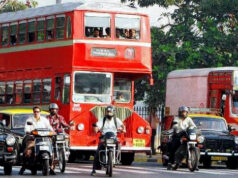Let me take it light this bright Sunday morning. No serious policy analysis or advice!
If somebody calls me a “canteen tourist” they wouldn’t be too far off the mark. Much of my research work involves visiting lots of government offices and a few corporations. I always make it a point to savour snacks at the canteen in the government office. The canteens I come across are of different types. Some offices have canteens which operate out from a hole-in-the-wall! Others have decreipt (not surprisingly) with the usual fans (that could well find their way to a local museum), tables that are not immediately cleaned (I often had to stand and eat my lunch). Without any available rationing mechanism for the demand of cheap food (most canteen food are of subsidized rates), no wonder you will find hawkers proliferating outside government offices, to fill in the demand.
Inside the government campus/ office, the near monopoly of the canteen is complete which is reflected in the pathetic and slow service, the salaries of the staff are largely independent of the sales of the canteen. This outcome leaves me baffled as to whether any better outcome is possible, since it is actually the government officials working there who have to bear the low quality of food and service.
By the way, I didn’t mention the taste of food available in government canteens. For any objective analysis of government canteen food you need to wipe out the concept of taste from your dictionary, if any such thing is possible!
Canteens can face competition from two sources: exogenous and endogenous. If prices at canteens are too high, or even if the lines are too long, or if food is of retchable variety, the officials working there will start doing a cost-benefit analysis of having canteen food. They might start bringing food from home or start looking for suitable options outside the government office precincts. A canteen (paid and maintained by government with subsidized rates) has no incentives to compete against these entities. Soon, you will find that the people who are most likely to stick through the rush and dirt in the canteen are the ones who are the most ones in need of food. The vicious cycle begins, with this clientele in place, the downfall of standards begin for this segment of the clientele is slightly inelastic to quality of food but elastic to prices. So you will see the senior government officials only having tea/ coffee and not any heavy food. So the outcome is bad food at low monetary prices. Add the price of standing in line to the monetary price and your equation may change. This “sink” that comes about is characteristic of most government services, consider for example, the general coach in trains, they are uniformly pathetic though they are low priced, monetarily speaking; consider government schools, the monetary price is low but the quality is abysmal.
A lot of people would advocate that everybody should be having food at the same canteen in order to put pressure on the canteen to deliver quality food. Unfortunately economics doesn’t work this way. Those who can, will always gravitate to better options; those who cannot, will bear the brunt of the bad services.
A recommended option to government offices to better their canteens would be to contract the canteen, or if space willing (govt offices have lots of real estate at disposal), have two separate smaller canteens, contract them and put them in competitive mode. Soon with the variety of options available to consumers of a canteen: getting food from home; getting food from outside hawkers or getting food from canteen, you will find better service. Some costs may get higher, but the quality will be better. Other costs will be low because the canteen owner would want to make it up through volumes. Again, the outcomes may not be idyllic bliss for all, but much better than the present situation.
Researching Reality
Naveen
Post Disclaimer
The opinions expressed in this essay are those of the authors. They do not purport to reflect the opinions or views of CCS.





